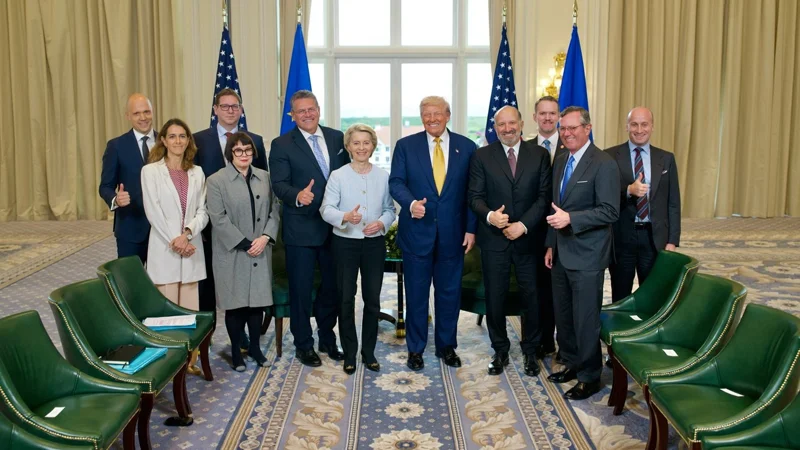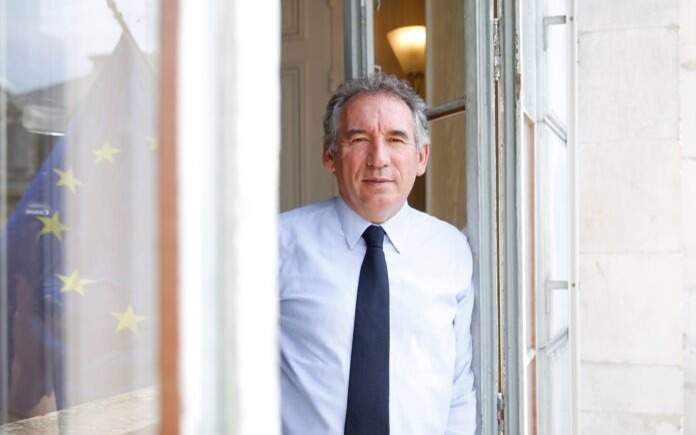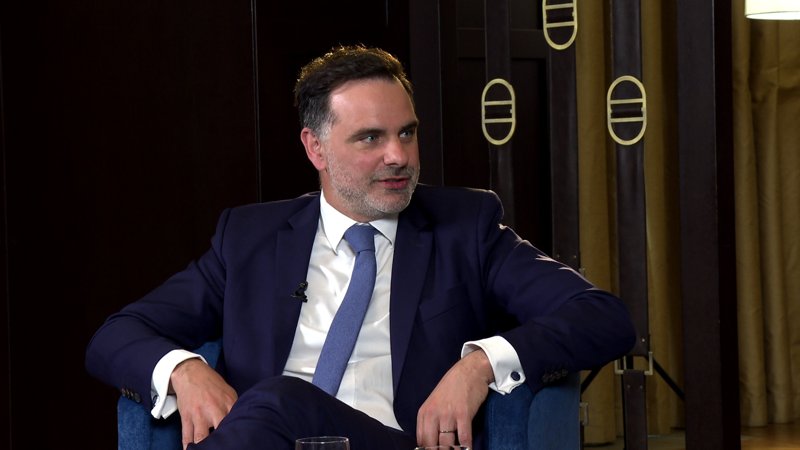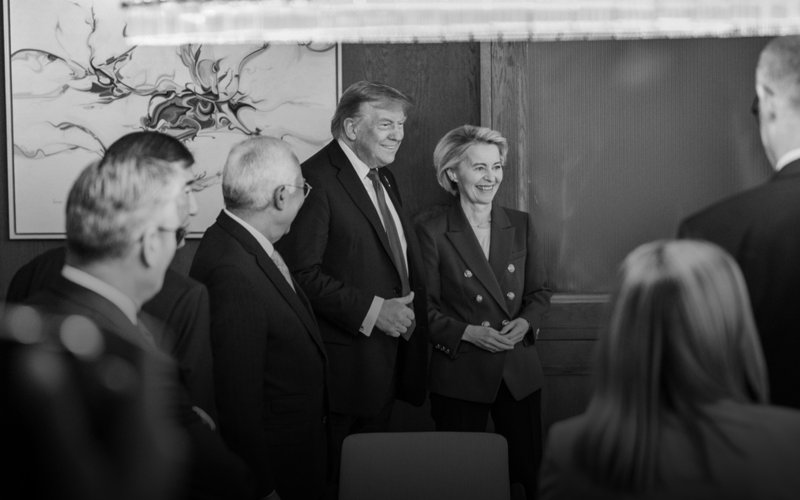U.S. and EU reach landmark trade deal, easing transatlantic tensions
The United States and the European Union have reached a framework trade agreement, imposing a 15% import tariff on most EU goods – half the rate initially threatened – and averting a larger trade conflict between the two allies that together account for nearly a third of global trade, reports a Kazinform News Agency correspondent.

The deal was announced following an hour-long meeting between U.S. President Donald Trump and European Commission President Ursula von der Leyen at Trump’s golf resort in western Scotland. After months of tense negotiations, the breakthrough was heralded by both leaders as a milestone in transatlantic economic cooperation.
“I think this is the biggest deal ever made,” Trump declared to reporters, noting that the EU has pledged to invest some $600 billion into the American economy while substantially boosting purchases of U.S. energy and defense equipment. The president emphasized that the agreement would correct what he called decades of “unfair treatment of U.S. exporters.”
President Donald J. Trump meets with the President of the European Commission, Ursula @vonderLeyen, in Scotland to discuss trade.
— The White House (@WhiteHouse) July 27, 2025
"We've had a very good relationship over the years, but it's been a very one-sided transaction... & I think both sides want to see a bit fairness." pic.twitter.com/XFxojMJ7EP
Von der Leyen, speaking alongside Trump, acknowledged the difficult nature of the negotiations.
“He’s a tough negotiator,” she said. “We have a trade deal between the two largest economies in the world, and it’s a big deal. It’s a huge deal. It will bring stability. It will bring predictability.”
The new agreement follows a similar framework reached with Japan the previous week, but leaves several key issues unresolved, including tariff policies on spirits and specialty goods. According to analysts, the 15% tariff — though lower than the threatened 30% — still marks a significant shift in transatlantic trade policy and will likely affect supply chains across multiple sectors.
European reactions mixed as tariffs remain and stakes rise
The deal stipulates that the EU will purchase $750 billion in American energy exports over the coming years, along with “hundreds of billions of dollars” in military hardware. Trump noted that the deal will create opportunities for American workers across sectors, especially in energy, agriculture, and manufacturing.
Key European manufacturers stand to benefit as well — provided the terms are honored and clarified. Companies like Airbus, Mercedes-Benz, and Novo Nordisk may find new inroads into the U.S. market under the framework’s stipulations. However, the agreement stops short of eliminating tariffs entirely, a point of frustration for many European stakeholders.
German Chancellor Friedrich Merz welcomed the accord, describing it as a measure that “avoided needless escalation in transatlantic trade relations.” Merz warned that a protracted trade dispute could have seriously harmed Germany’s export-driven economy, especially its auto sector, which was already affected by a 27.5% U.S. tariff on vehicle and parts imports.

Still, concerns persist within the EU over the long-term implications of the deal. Many analysts argue the investment commitments made by Brussels may stretch the bloc’s own resources and strategic autonomy. The baseline 15% tariff — though a compromise — is seen by some as incompatible with the EU’s earlier demands for zero-for-zero trade terms.
Moreover, a senior U.S. administration official confirmed that Washington retains the right to increase tariffs should the EU fail to meet its investment pledges. “The opportunity of opening their market is enormous for our farmers, our fishermen, our ranchers, all our industrial products, all our businesses,” the official told reporters. “Their economy is $20 trillion... they are five times bigger than Japan.”
France voices dissent despite market optimism and political hopes for stability
The initial market response to the agreement was positive. The euro climbed 0.2% against the dollar, sterling, and yen, while major European stock indices opened higher on Monday. Germany’s DAX rose by 0.86%, France’s CAC 40 by 1.1%, and the pan-European Stoxx 600 index hit a four-month high.
However, enthusiasm waned as fractures within the EU began to surface. French Prime Minister François Bayrou sharply criticized the deal, calling it a capitulation to American pressure. “It is a dark day when an alliance of free peoples, brought together to affirm their common values and to defend their common interests, resigns itself to submission,” Bayrou wrote on X.

Further emphasizing internal EU divisions, French President Emmanuel Macron remained silent, while the French European Affairs Minister Benjamin Haddad urged the bloc to activate its “anti-coercion instrument” to enable non-tariff retaliation.
French Trade Minister Laurent Saint-Martin also criticized Brussels’ handling of the talks. “Donald Trump only understands force,” he told France Inter radio. “It would have been better to respond by showing our capacity to retaliate earlier.”

In contrast, Italian Prime Minister Giorgia Meloni welcomed the deal, saying it had averted “potentially devastating” consequences. Speaking from a summit in Ethiopia, she stated,
“A trade escalation between Europe and the U.S. would have had unpredictable and potentially devastating consequences.” However, she added that Rome would need time to study the details of the agreement.

While tariffs on most goods, including semiconductors and pharmaceuticals, will be applied, several exceptions remain. Von der Leyen confirmed that there will be no duties on aircraft and parts, certain chemicals, generic drugs, semiconductor equipment, and key raw materials.
“We will keep working to add more products to this list,” she said, noting that talks on spirits and specialty agricultural goods were ongoing.

Notably, the U.S. will maintain its 50% tariff on steel and aluminum, a long-standing point of contention. A senior U.S. official said that while the EU proposed transitioning to a quota system, discussions on these metals would continue.
The framework agreement, while offering immediate relief from tariff escalation, remains provisional and politically fragile. Analysts warn that without a formal, comprehensive trade treaty, the possibility of conflicting interpretations could destabilize relations further — as seen following the recent U.S.-Japan deal.
Despite criticism, the Trump administration is expected to tout the agreement as a strategic win in its broader effort to overhaul the global trade system. Trump, who has previously accused the EU of being “formed to screw the United States,” has pointed to the U.S. merchandise trade deficit with the bloc — which reached $235 billion in 2024 — as a longstanding grievance. EU officials, in turn, highlight the U.S. surplus in services, which they argue balances the ledger.
With similar framework deals now signed with Britain, Japan, Indonesia, and Vietnam, Trump continues to pursue his goal of reordering global trade, despite falling short of his campaign pledge of “90 deals in 90 days.” Whether Sunday’s agreement brings sustainable calm or sows new tensions remains to be seen.
Earlier, U.S. President Donald Trump stated on Friday that his administration expects to finalize most of its trade agreements with partner countries by August 1, as South Korea and other nations continue negotiations aimed at lowering their “reciprocal” tariff rates ahead of the deadline.
